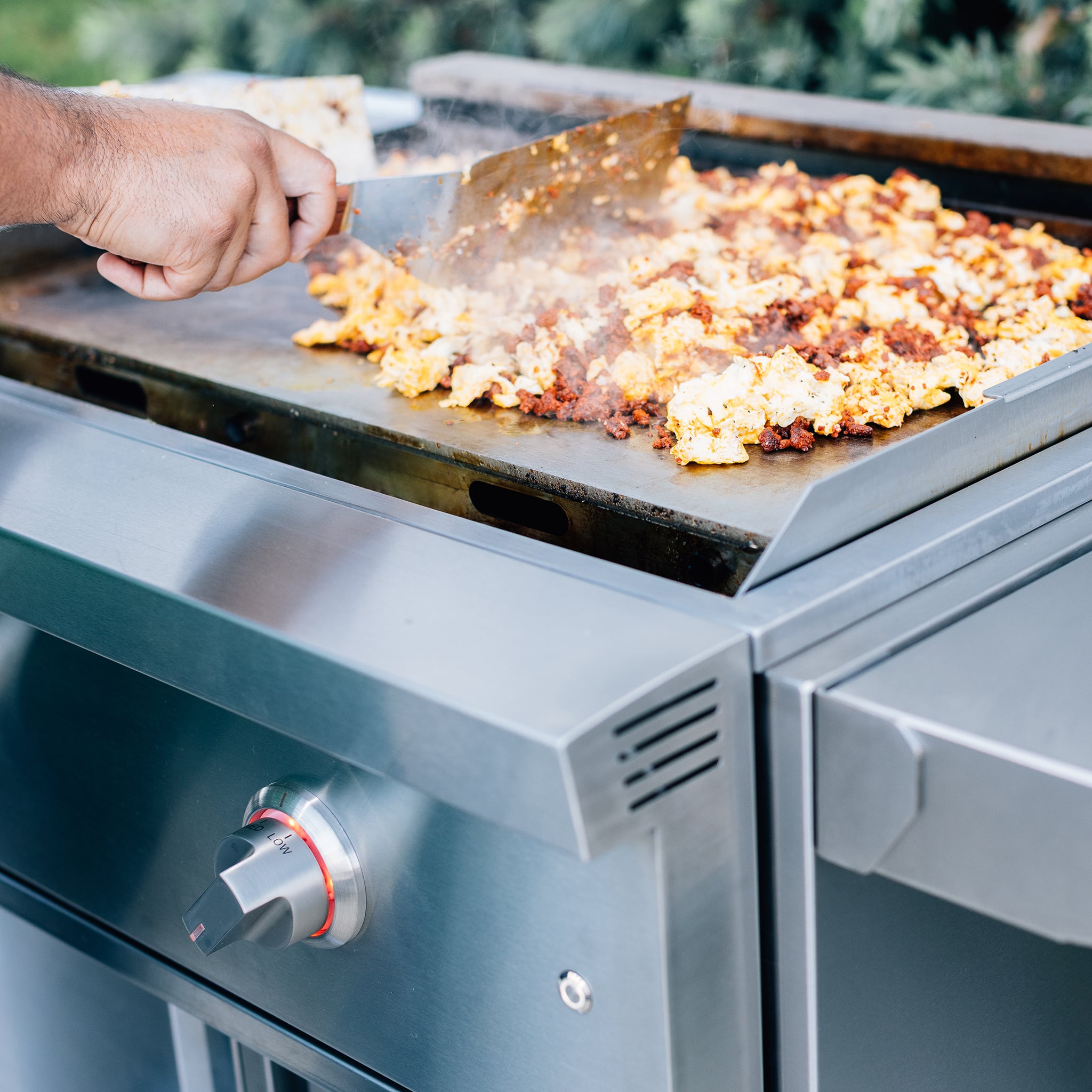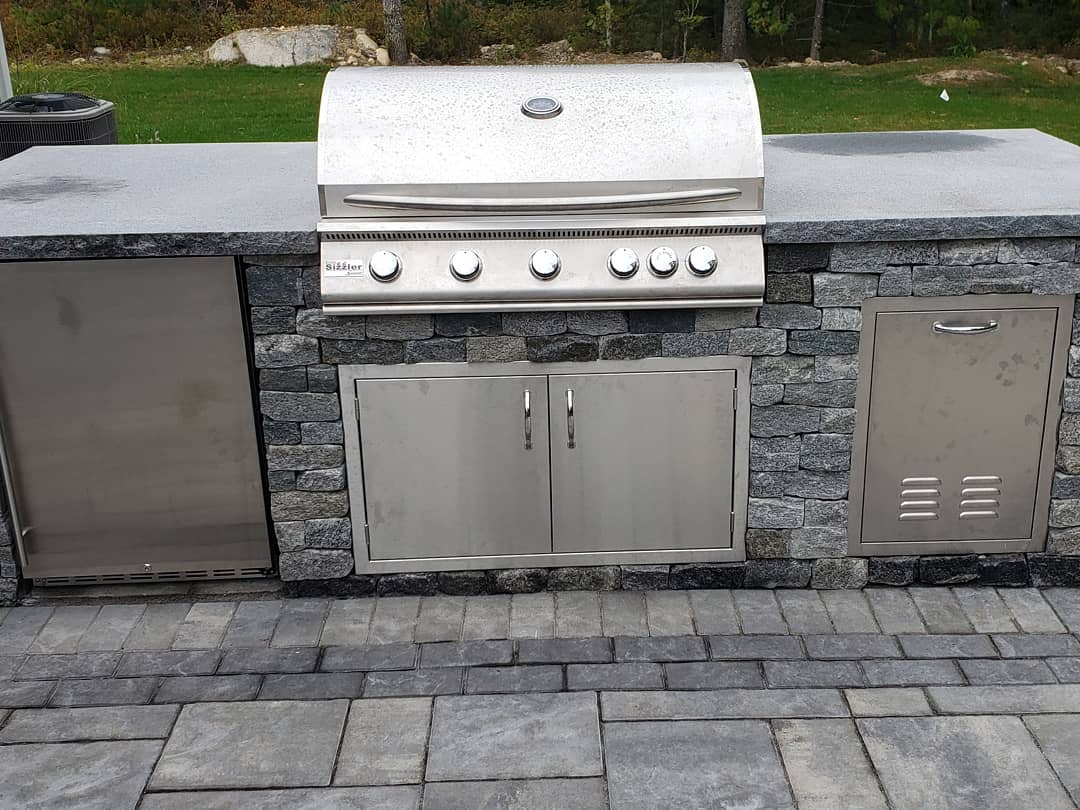Grill islands are valuable additions to any backyard and come in all shapes and sizes. Whether purchasing a prefab or designing a custom, there are several materials to choose from for the walls of your grill island base. Each type of material has different degrees of durability, maintenance, cost, and difficulty to install, but ultimately, it’s about your personal preference and lifestyle. Even though the countertops and appliances often catch the eye first, the wall surface material equally contributes to the backdrop and look of the outdoor space.
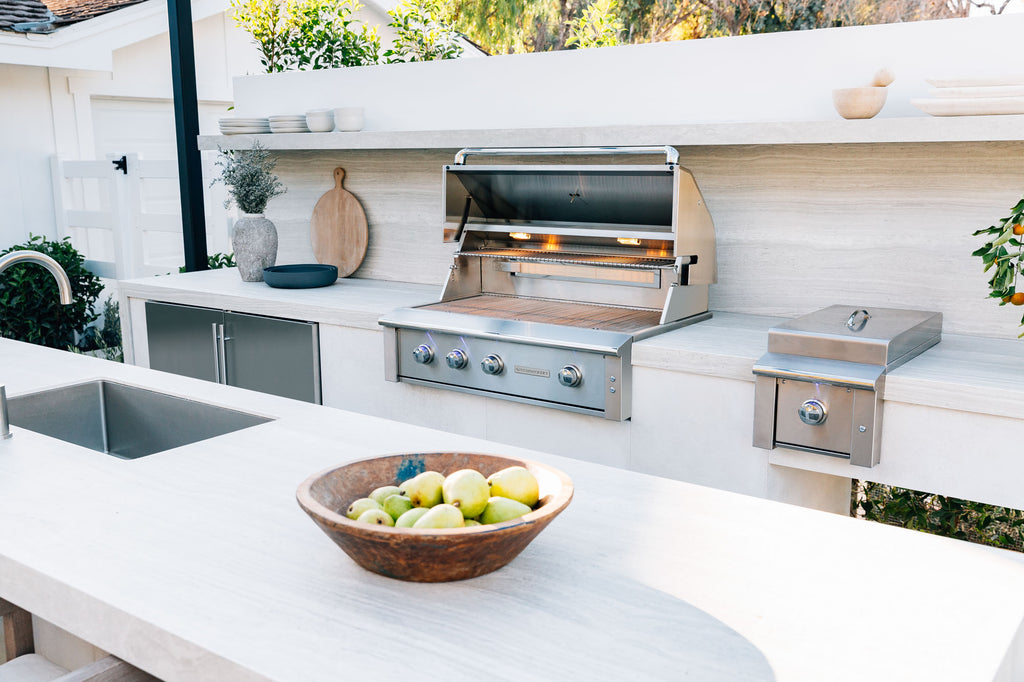
Popular Materials for a New Grill Island
Everyone wants an outdoor space that is durable and able to last against the elements while maintaining its beautiful appearance. Here are some of the most popular materials for grill island walls:
Natural Stone
Natural stone is authentic, ageless, and custom, with no identical pieces. This lack of uniformity makes it elegant and genuine but requires professional installation. Durable through any weather and climate, it is heavy and requires a formidable structure to support the weight.
Cultured Stone Veneer
Cultured stone veneer is manufactured and engineered from cement to resemble their real stone counterparts. It looks stunning and lasts as long as natural stone, although, upon closer examination, repeated patterns of identical sections can be seen. It is a more flexible material because it is lighter and easy to cut, trim, and manipulate for custom installations.
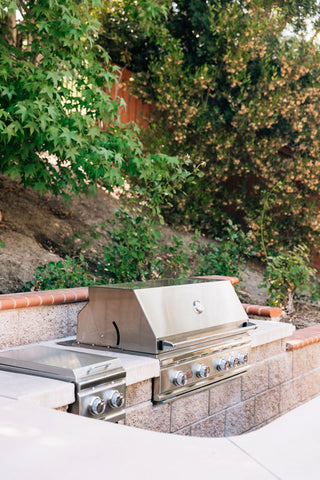
Tile
Tile is a favorite material for visually appealing displays of charm and tradition. Both ceramic and porcelain tiles can be manipulated and cut to fit any installation. Porcelain tile is more expensive and durable due to a coating of liquified glass. It can be engineered with designs or look like other materials like stone or wood. Part of the charm of tile is the grout’s geometric lines, which can also require more maintenance over time from discoloration and staining.
Brick
Brick is beautiful, rustic, cheap, and timeless. Enduring and iconic brick structures communicate tradition but are often incorporated into transitional and industrial designs. Able to handle most climates, brick wall construction can be a DYI alternative unless brick cutting is necessary.
Concrete
When sleek and polished, concrete can be a striking, modern-looking material. It’s heavy and requires professional help for vertical installations, but it can add a smooth, silken look to make the island stand out. When properly sealed and maintained, concrete offers solid durability.
Stucco
Stucco is one of the most flexible and customizable materials in the group. It is lightweight and comes in almost any color to fit your design. A cement-based finish popular in home construction, stucco can be manipulated to suit any style through staining and troweling, such as tinting to mimic terra-cotta for a rustic look.
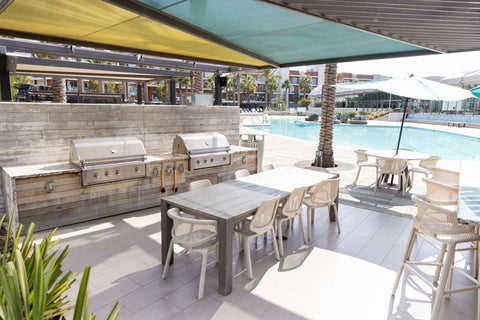
Wood
Wood is warm and welcoming, especially when contrasted with stainless steel appliances. Outdoor-treated wood slatting can add long lines and scenic beauty. Wood will require more maintenance as it is susceptible to staining and discoloration, but it can be a welcome touch of contrast to a stone or concrete patio. Since it is combustible, insulated jackets for cooking appliances are a must.
Metal Panels
Metal panels offer a sleek, contemporary look that is hard to beat for modern grill island designs. Available in various finishes, including stainless steel, copper, and brushed aluminum, metal panels are durable, weather-resistant, and easy to clean. They reflect heat effectively, which can be beneficial in sunny locations. However, they can be prone to dents and scratches over time and may require insulation to protect against heat conduction.
Prefab Outdoor Kitchen Cabinet Systems
Prefab outdoor kitchen cabinet systems are efficient and cost-effective for creating a grill island. Made from durable materials such as marine-grade polymer or stainless steel, these cabinets come in various sizes and configurations to fit any space. They are easy to assemble and can be customized with different finishes, countertops, and appliances.
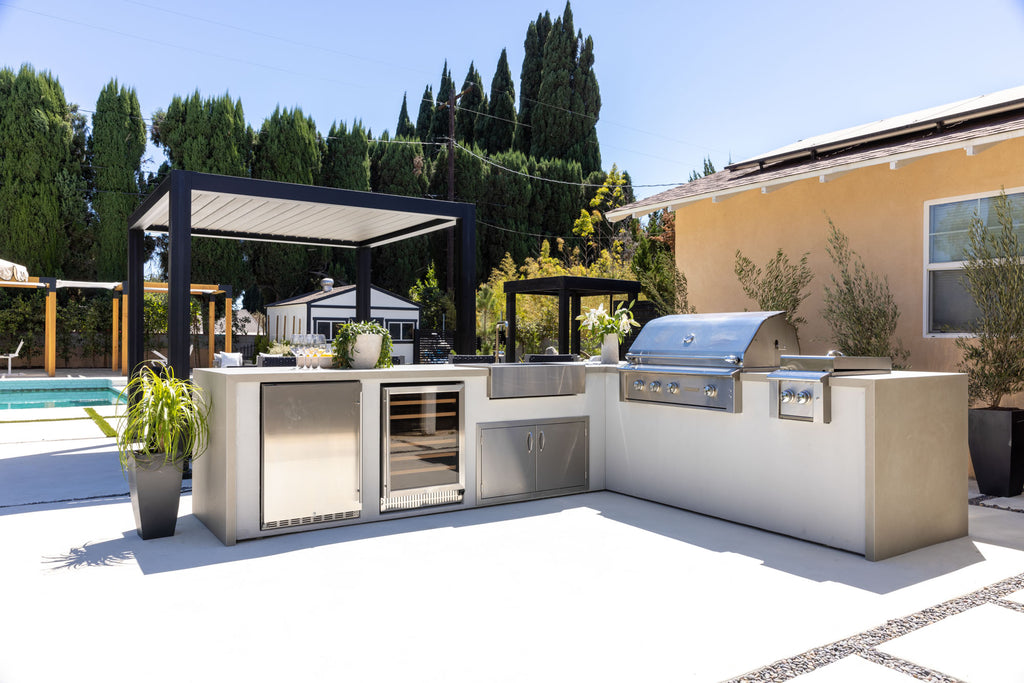
How to Create Your Dream Outdoor Kitchen
Creating your dream outdoor kitchen can be equally exhilarating. With the proper guidance and a sprinkle of creativity, you can design a space that elevates your culinary exploits and becomes the heart of outdoor entertainment. The Summerset Outdoor Kitchen Planning Series offers a comprehensive roadmap to navigate the myriad choices and considerations in designing an outdoor kitchen that perfectly suits your lifestyle and budget.
Location
Choosing the ideal location for your outdoor kitchen sets the stage for the entire project. A spot that balances accessibility with the natural beauty of your outdoor space can enhance your kitchen’s functionality and enjoyment.
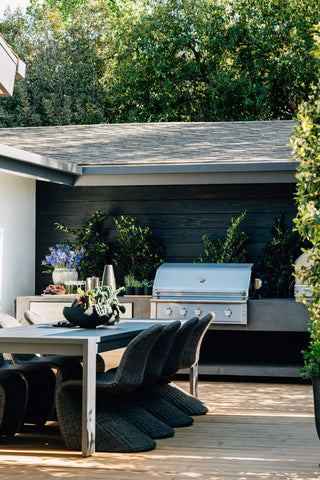
Layout
Designing your layout with efficiency in mind ensures that everything from prep work to plating is seamless. Incorporating different zones for cooking, cleaning, and entertaining can maximize the usability of your space.
Utilities
Utility installation is a critical step that often goes overlooked in the excitement of design. Proper planning for plumbing, electrical, and gas lines ensures safety and enhances your outdoor kitchen’s functionality. Whether you dream of a fully equipped bar or a pizza oven that rivals your favorite Italian bistro, getting the utilities right is key.
Appliances
Choosing the right appliances and accessories brings your outdoor kitchen to life. From the high-performance grilling offered by Summerset Grills to innovative storage solutions and cold storage options, selecting appliances that match your cooking style and entertainment needs can transform your outdoor kitchen from a simple cooking area to a gourmet chef’s paradise.
Budget
Understanding your budget and potential costs from the outset can guide your decisions, helping you prioritize the features most important to you while keeping your project within financial reach. Setting a realistic budget is crucial, whether you’re planning a modest refresh with a new grill and some updated furniture or a full-scale culinary haven complete with all the bells and whistles.
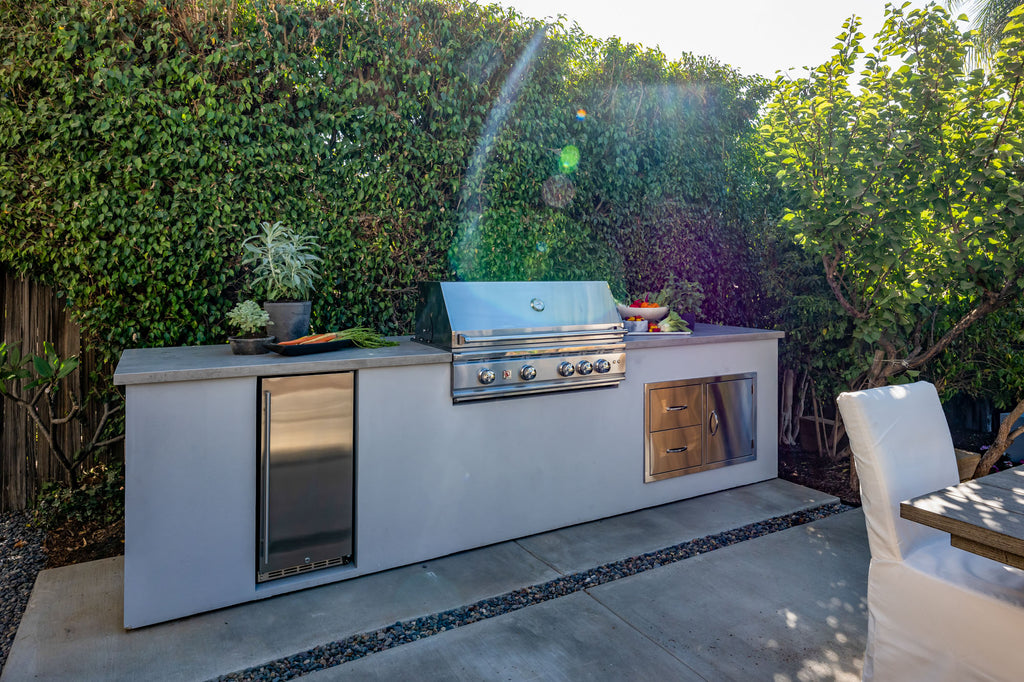
So, Which Material is Best for a New Grill Island?
Picking a suitable material for your grill island comes down to preference. Do you want minimal maintenance? Then natural stone or brick would be the right choice. Certain stone veneer and concrete types can deliver crisp precision if you prefer a more engineered look. Stucco may be the right choice if you’re on a budget and want something other than the traditional look of brick. Each material can complement your style and transform the aesthetic of your outdoor living retreat.
The Summerset Outdoor Kitchen Planning Series breaks down the entire process into manageable steps, arming you with the knowledge and inspiration needed to bring your vision to life. With careful planning, a dash of imagination, and the right tools, your dream outdoor kitchen is well within reach.

